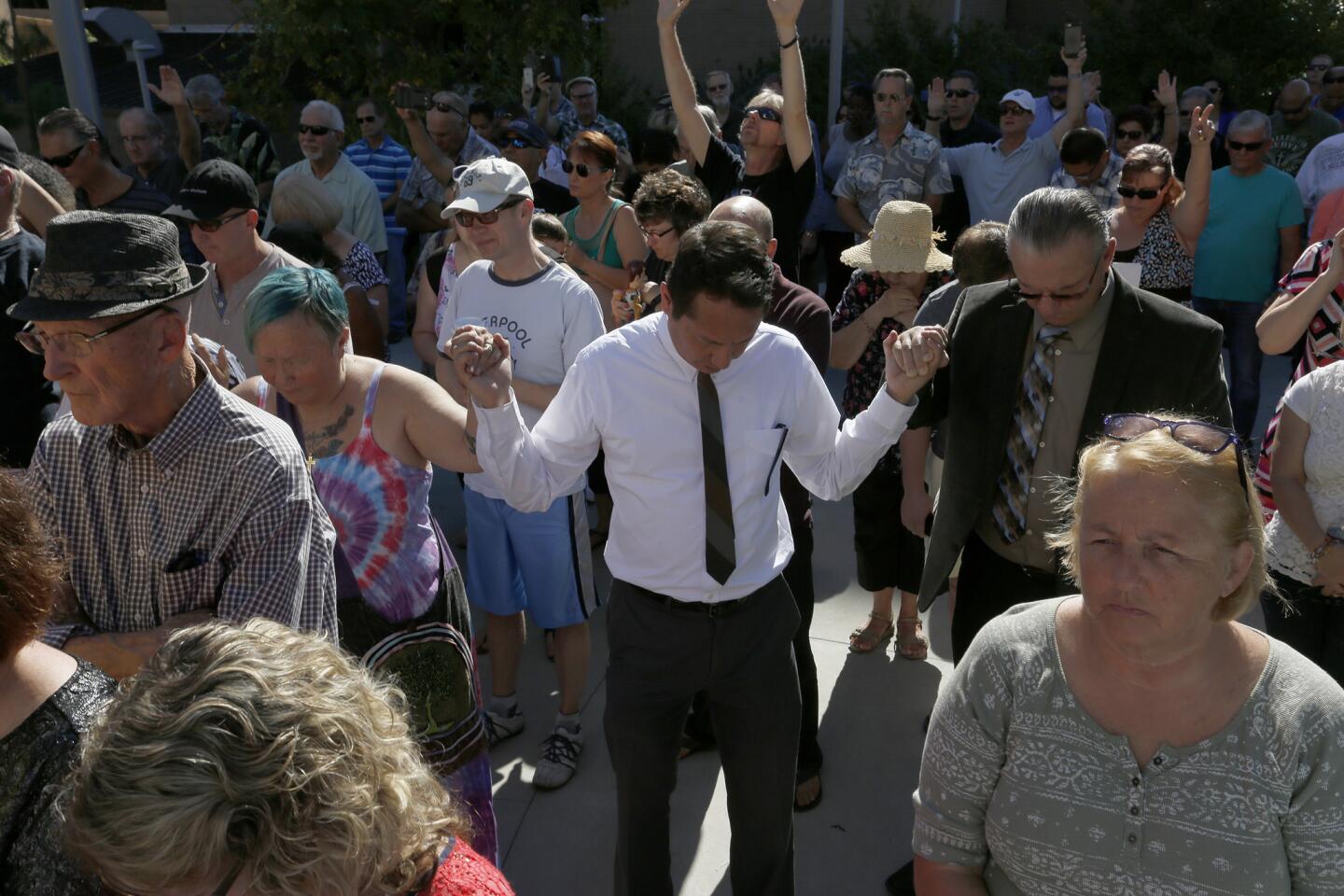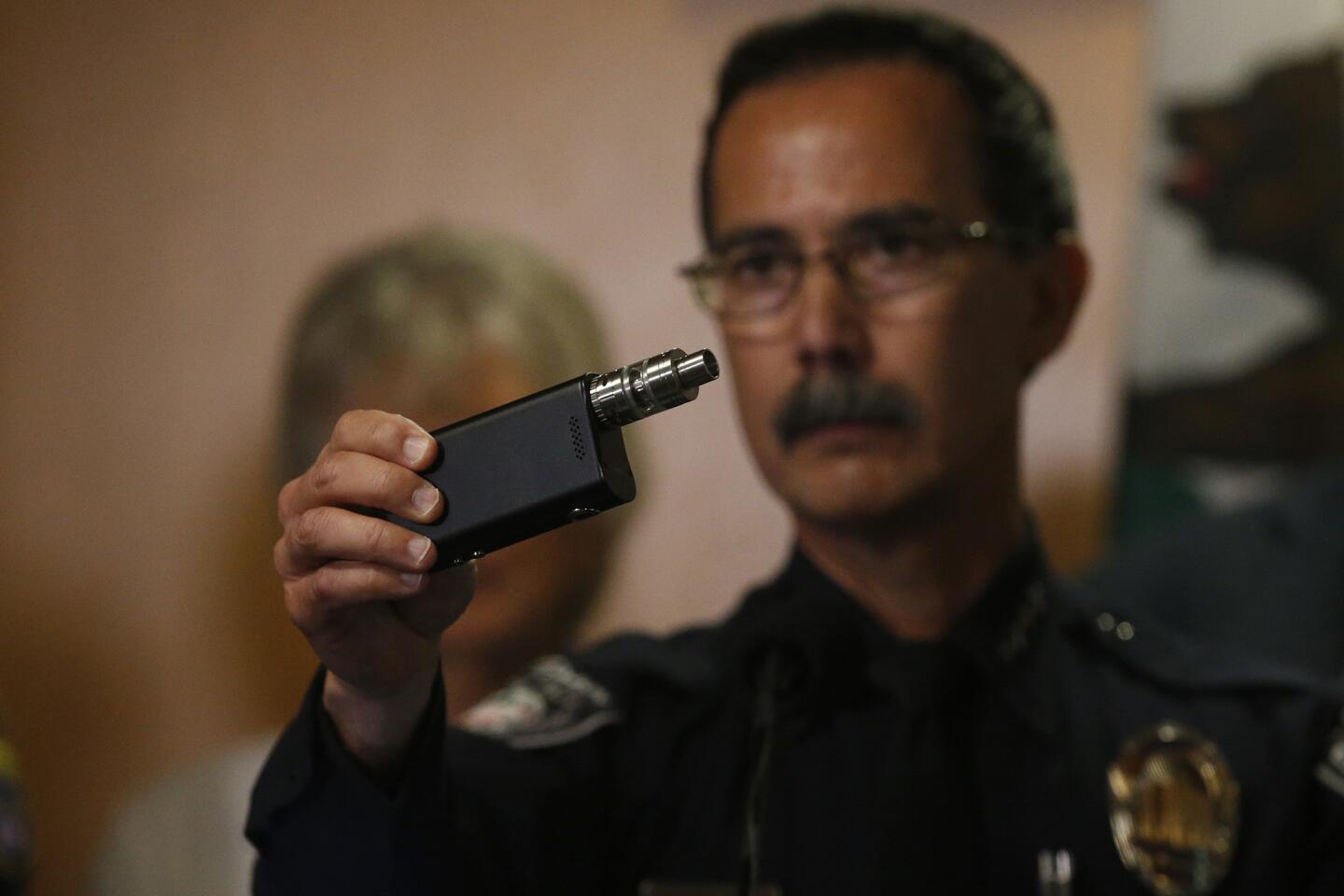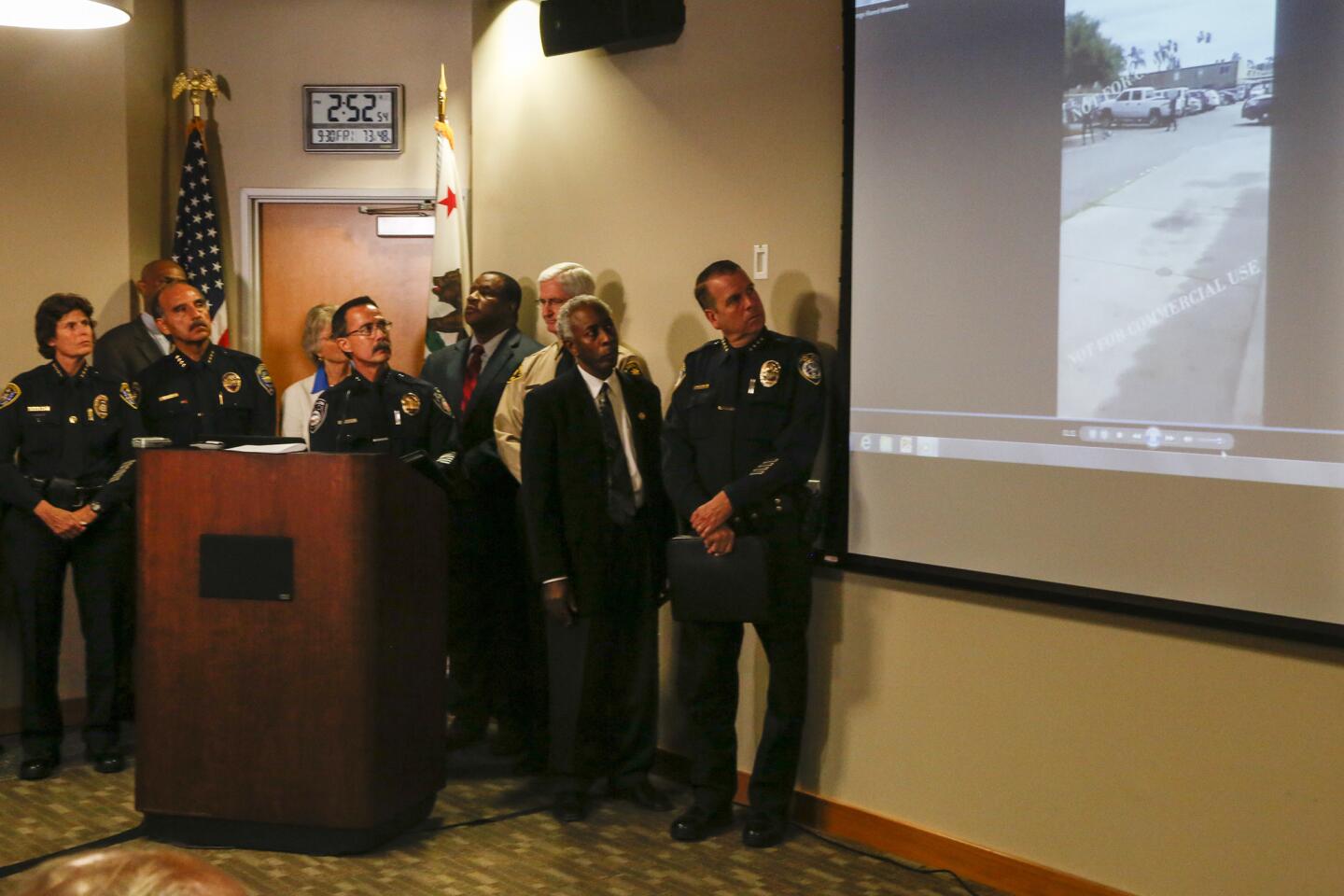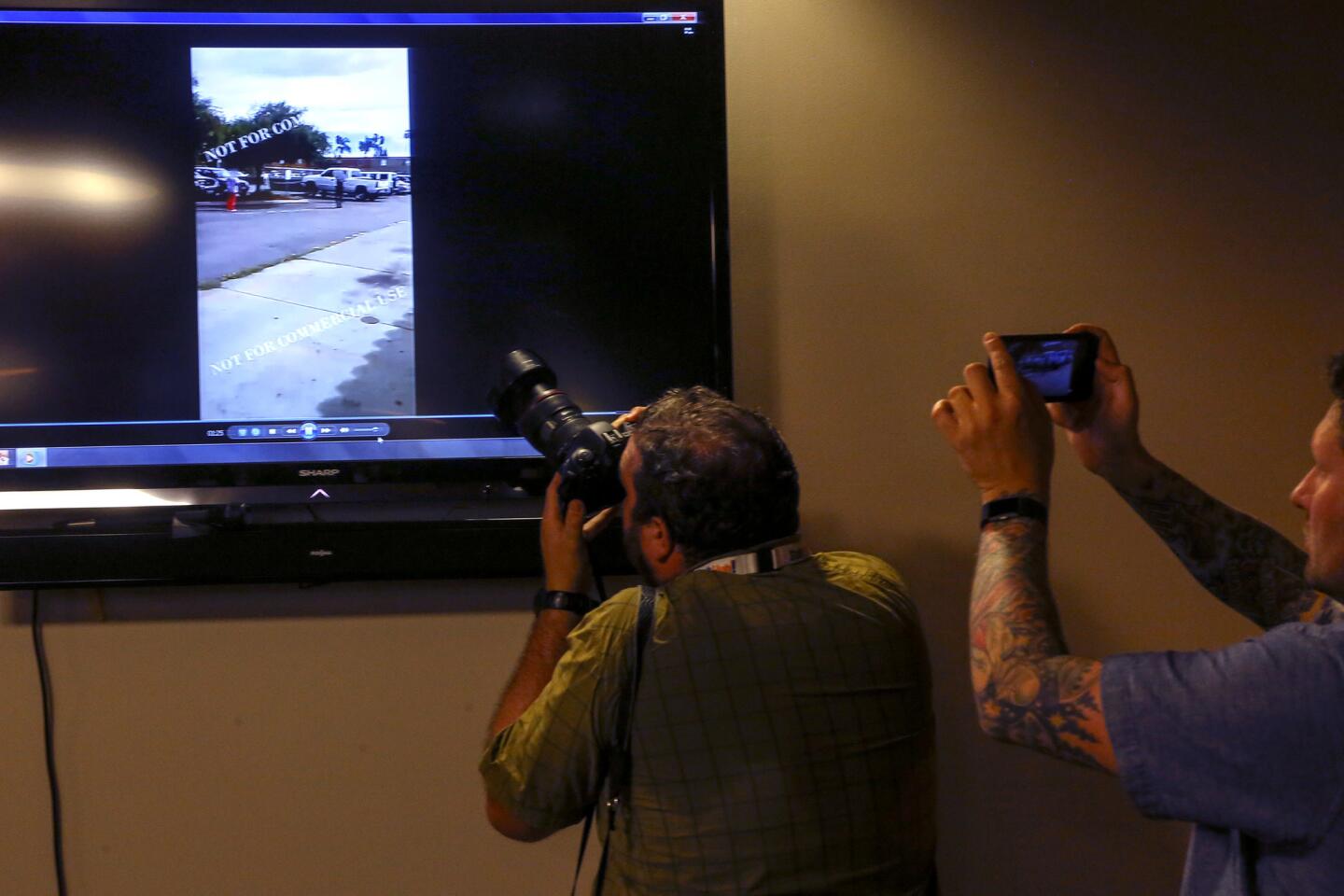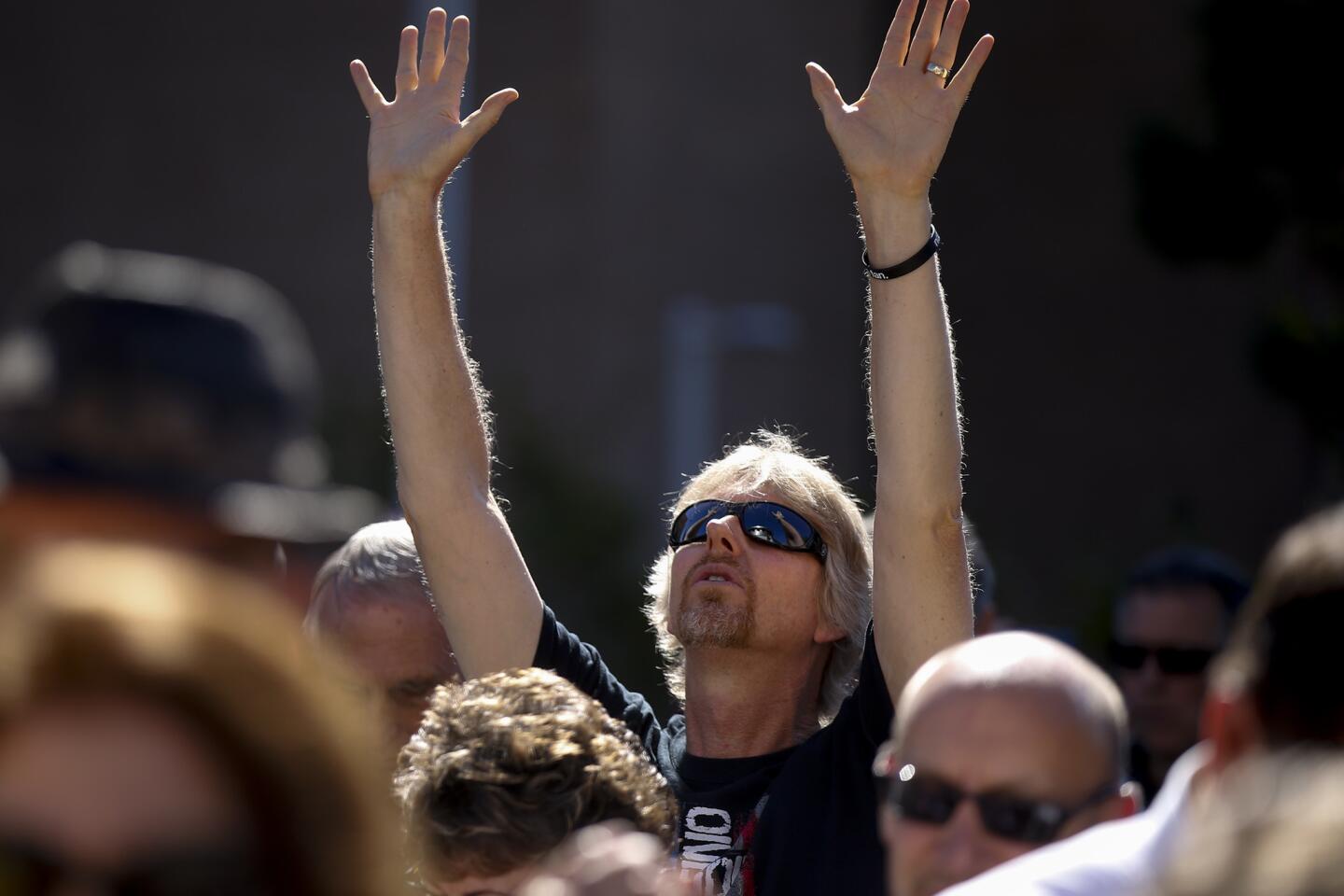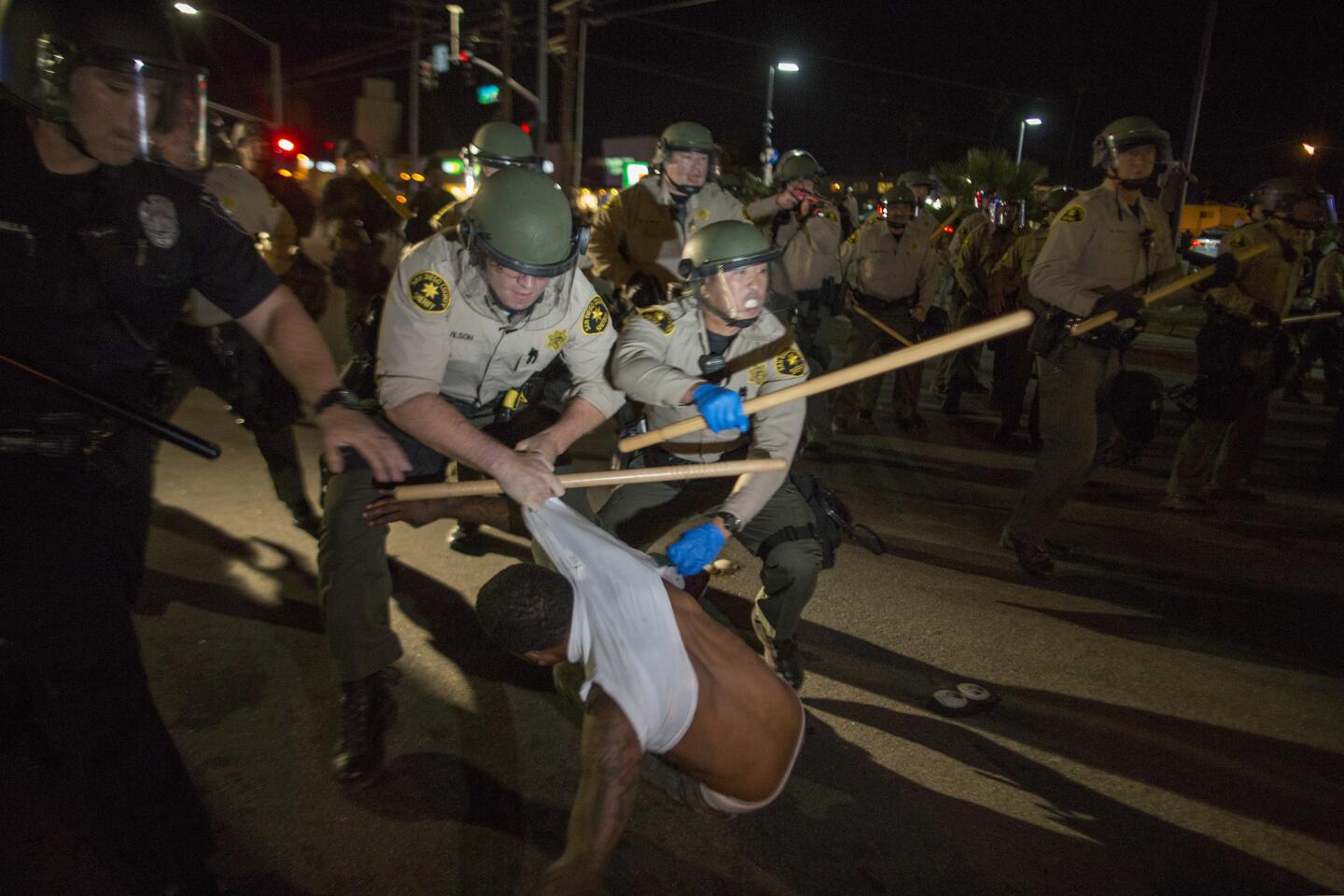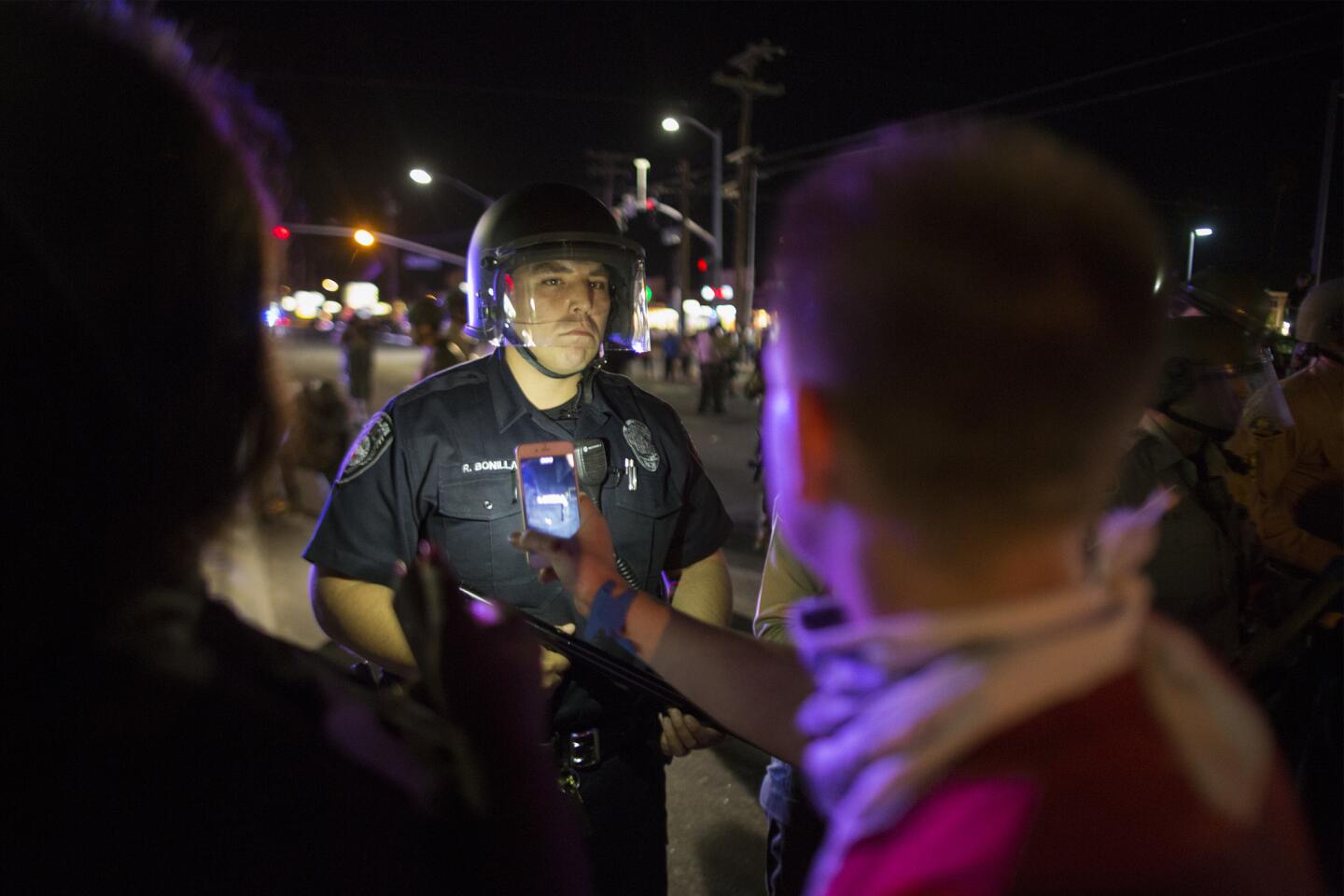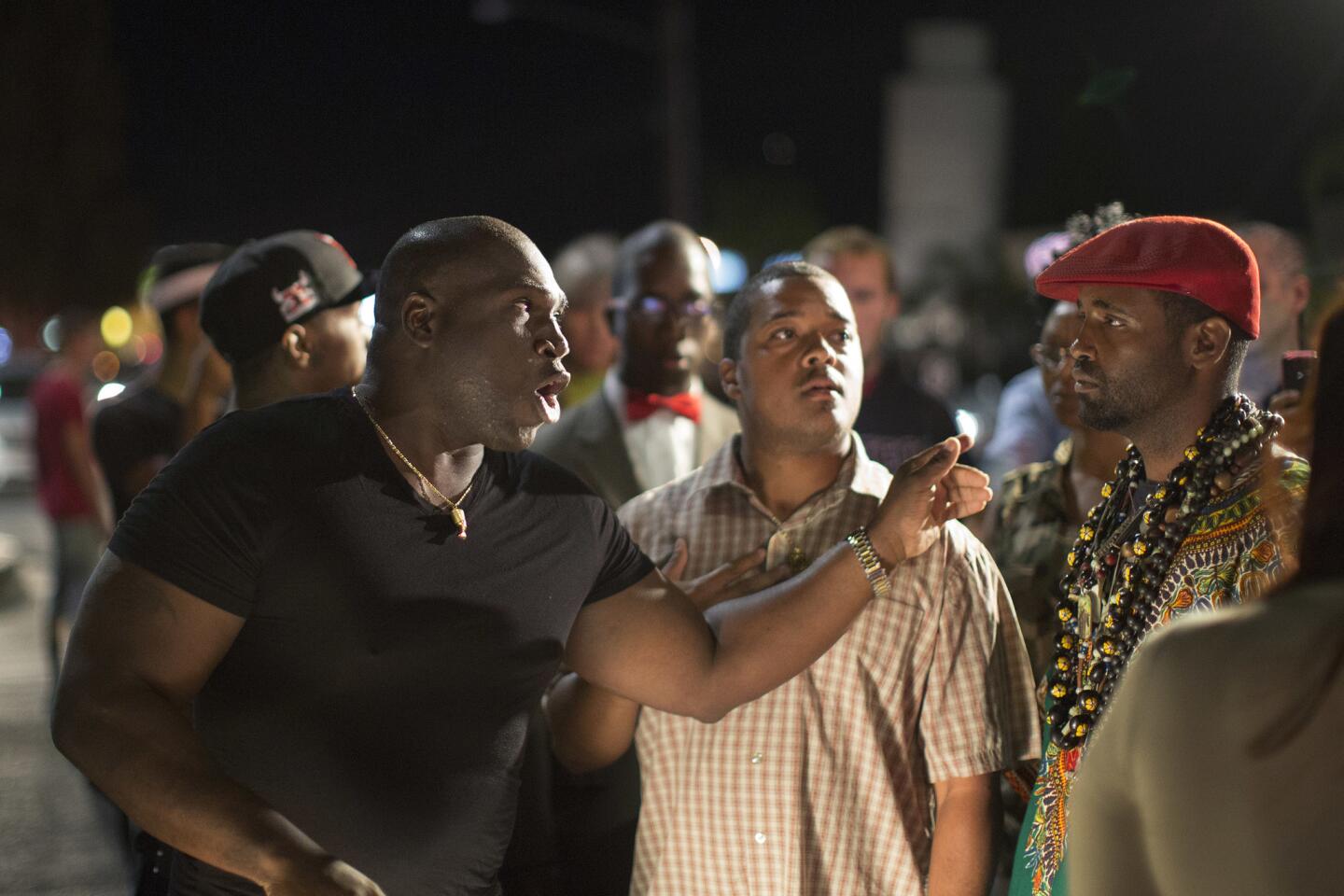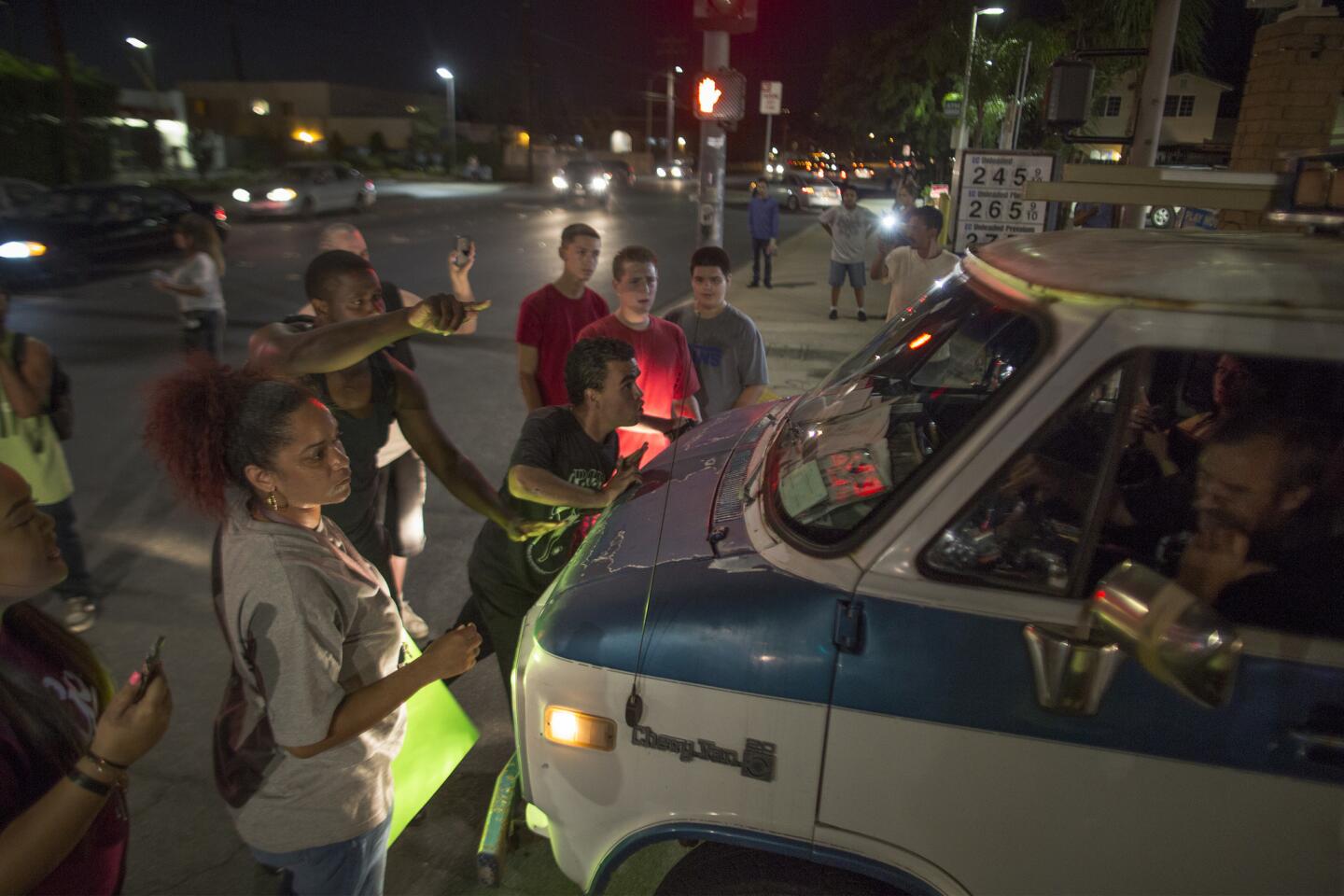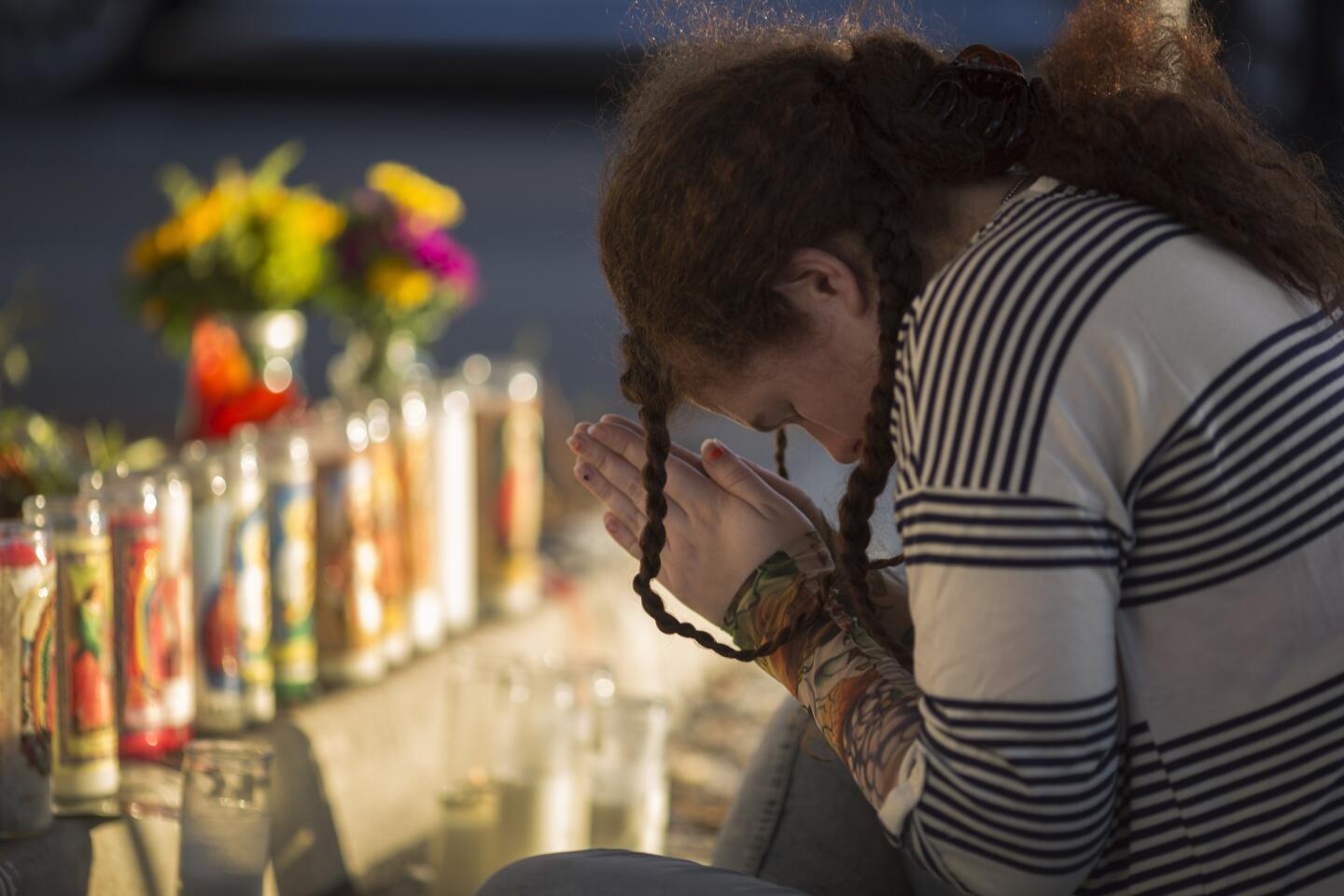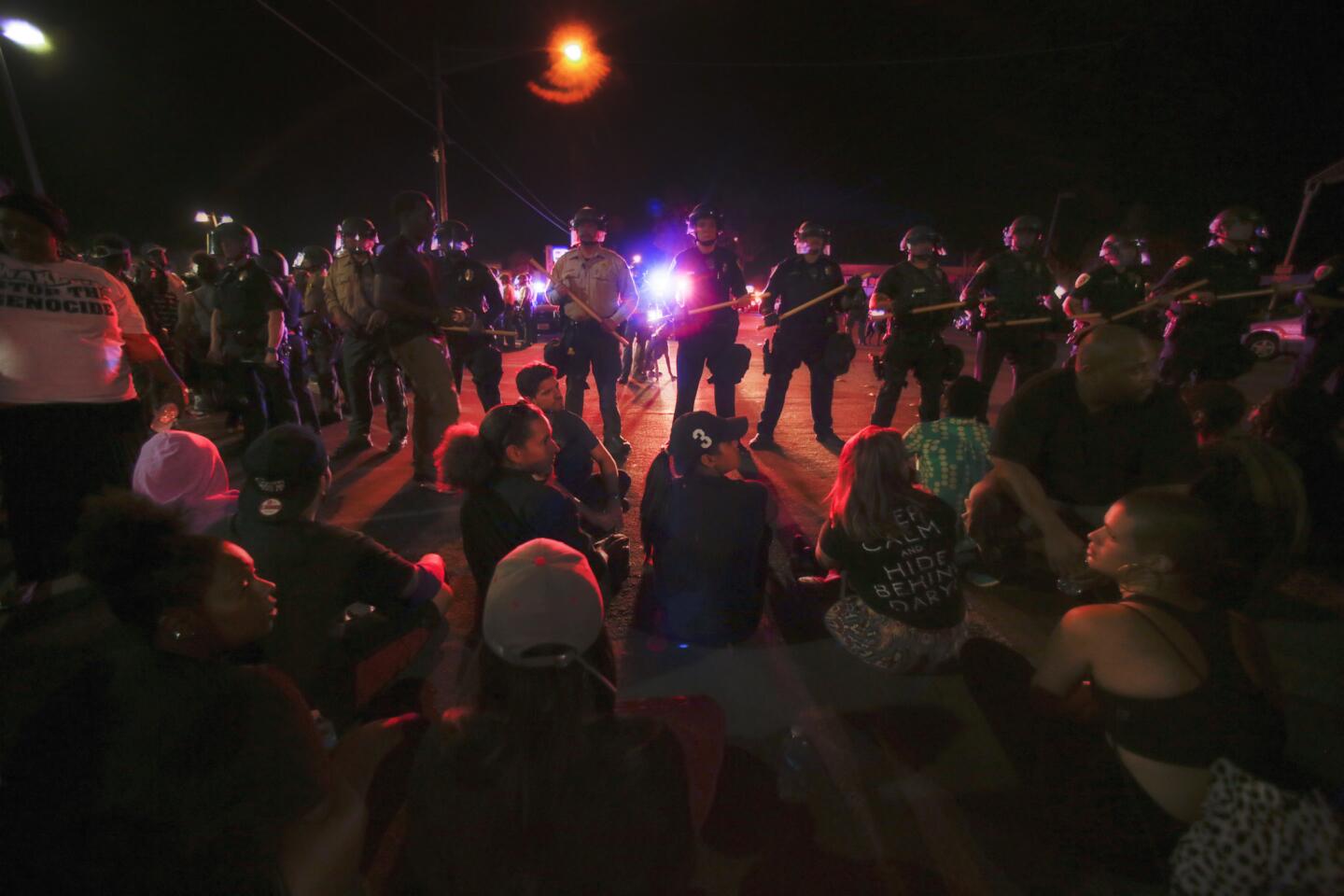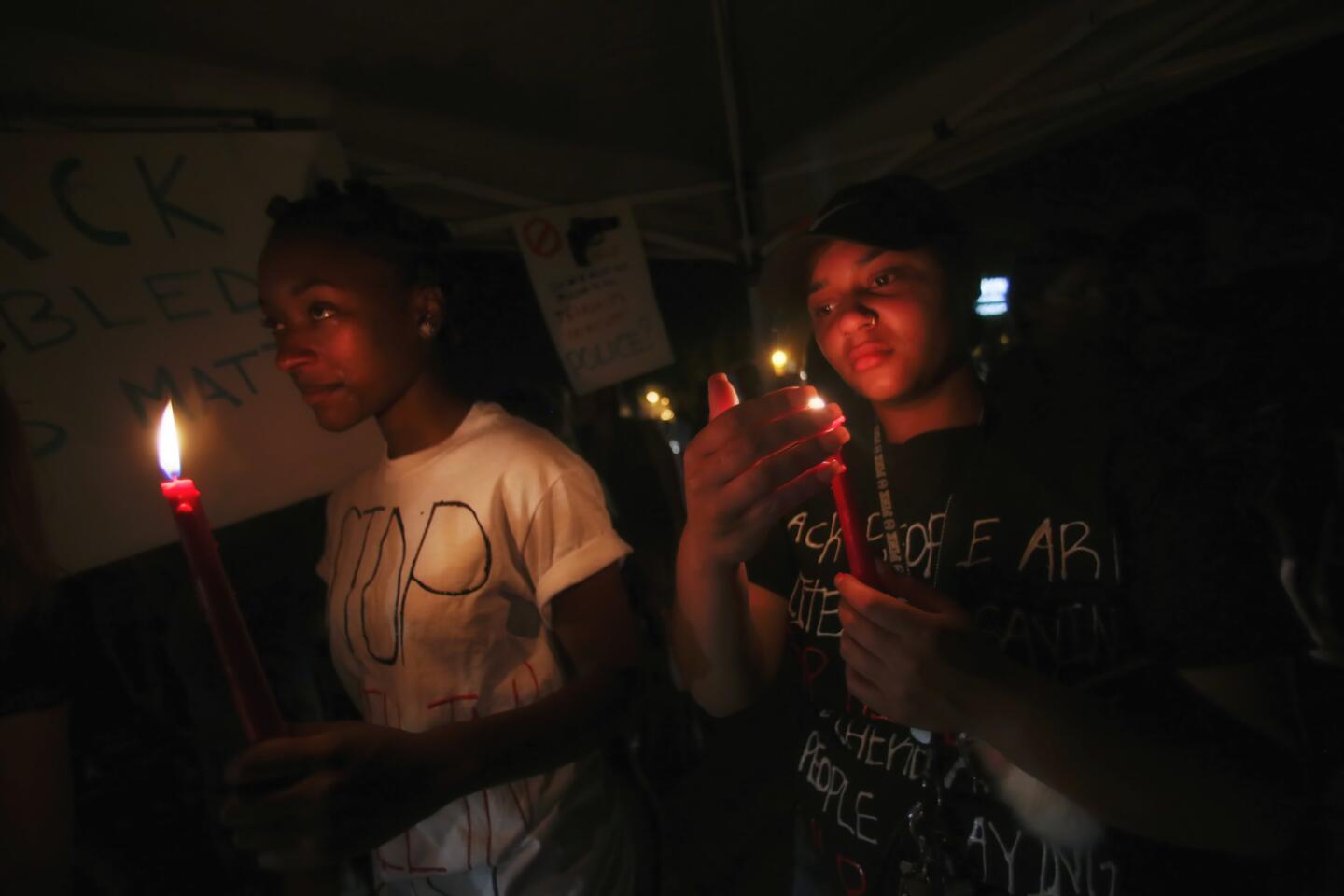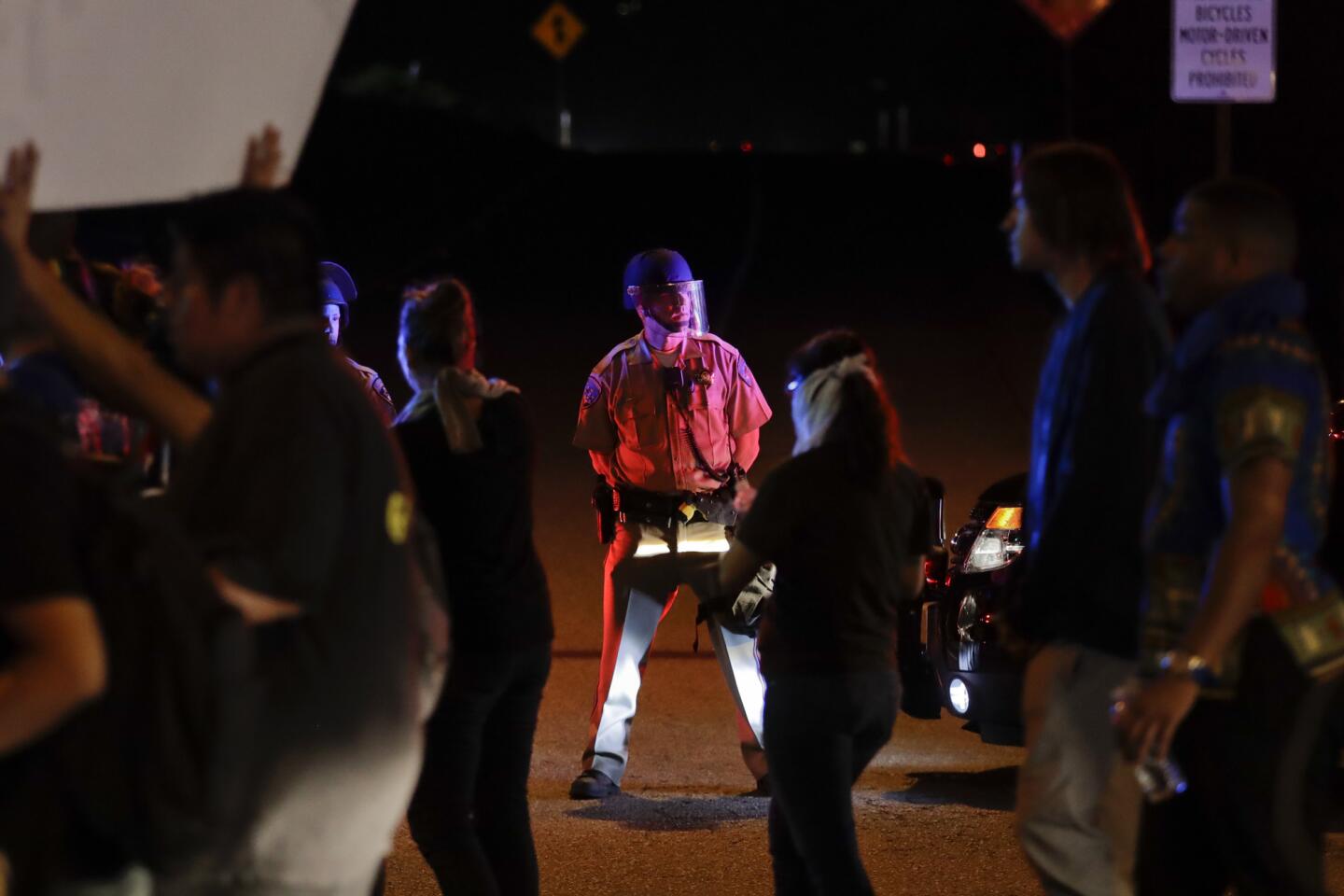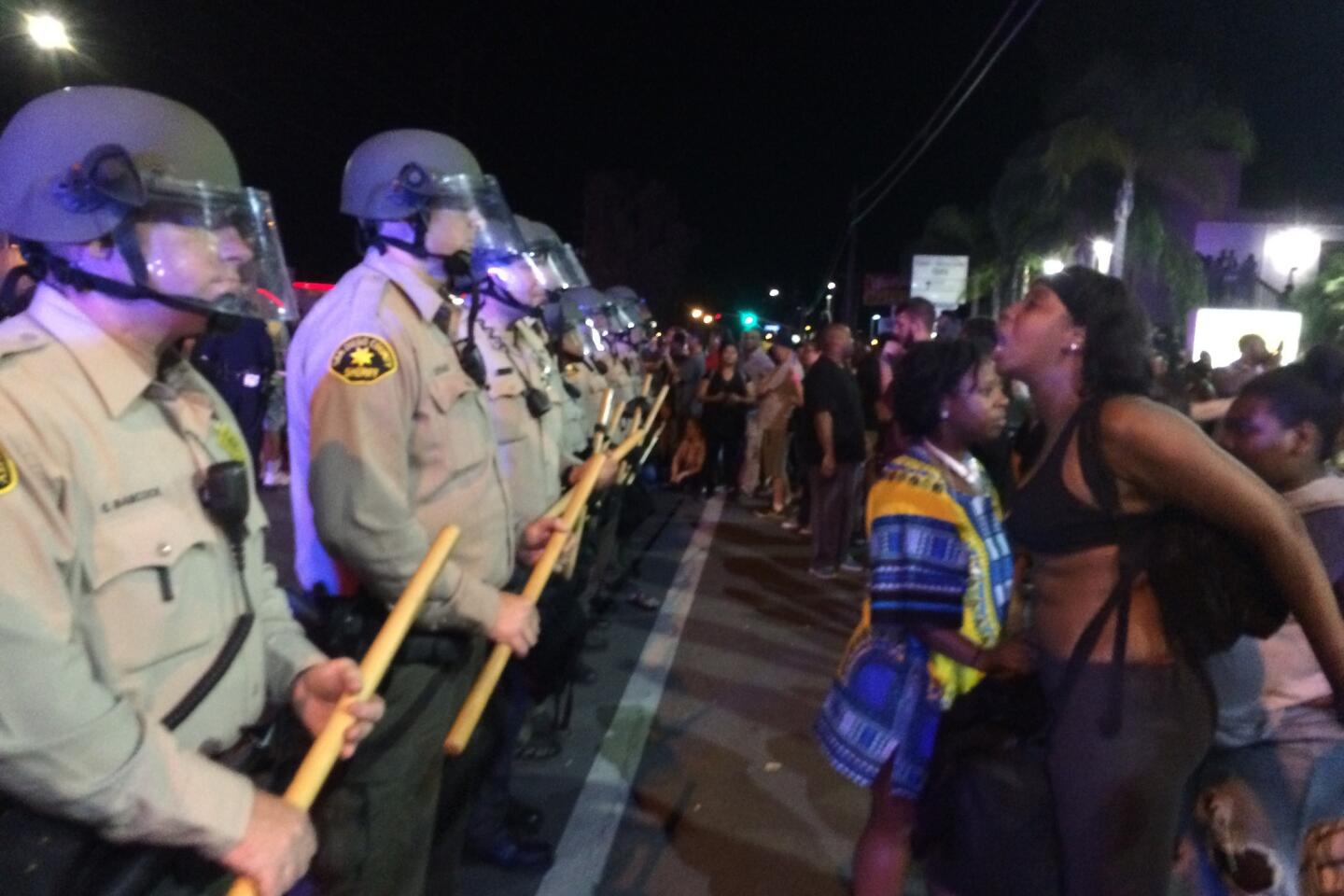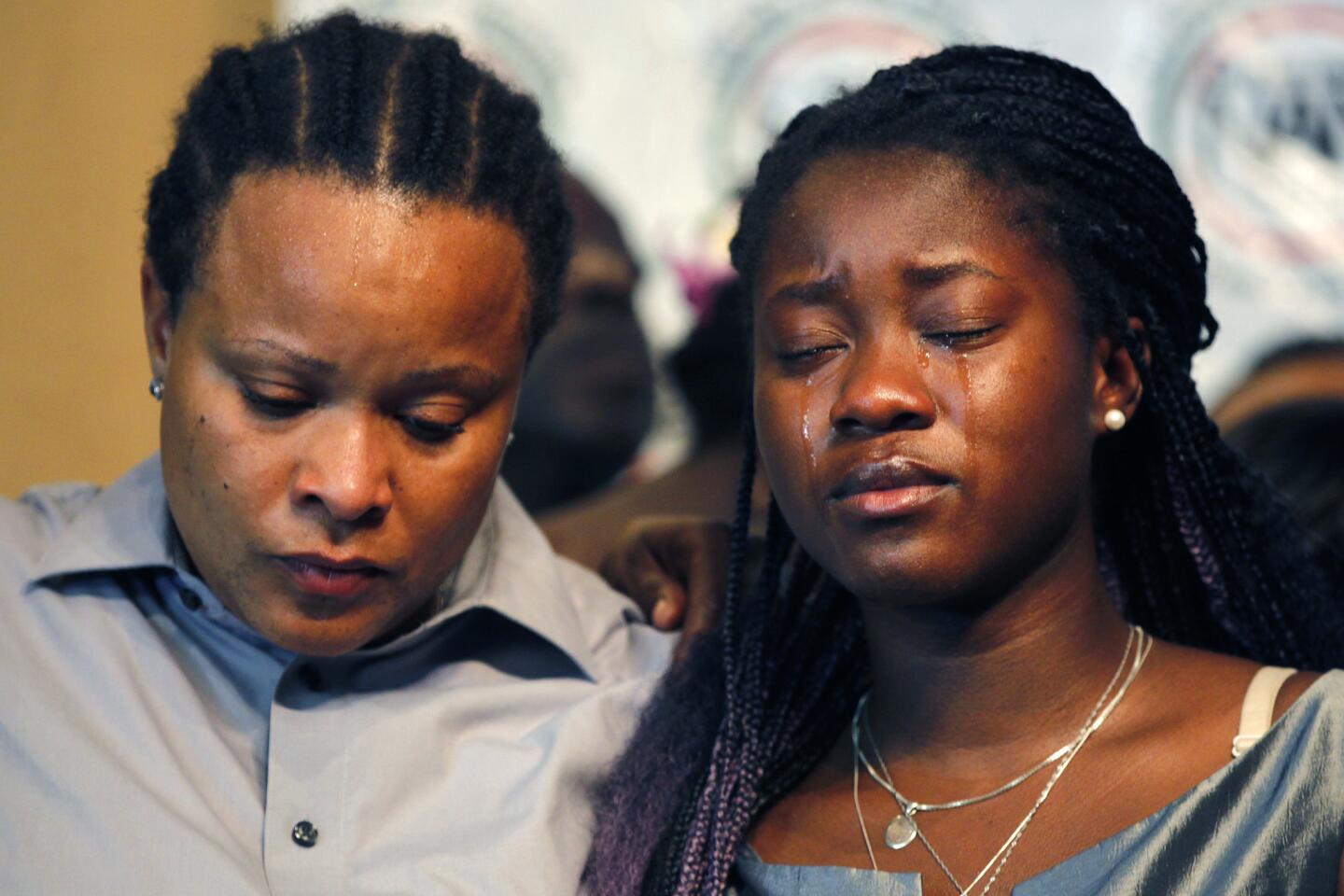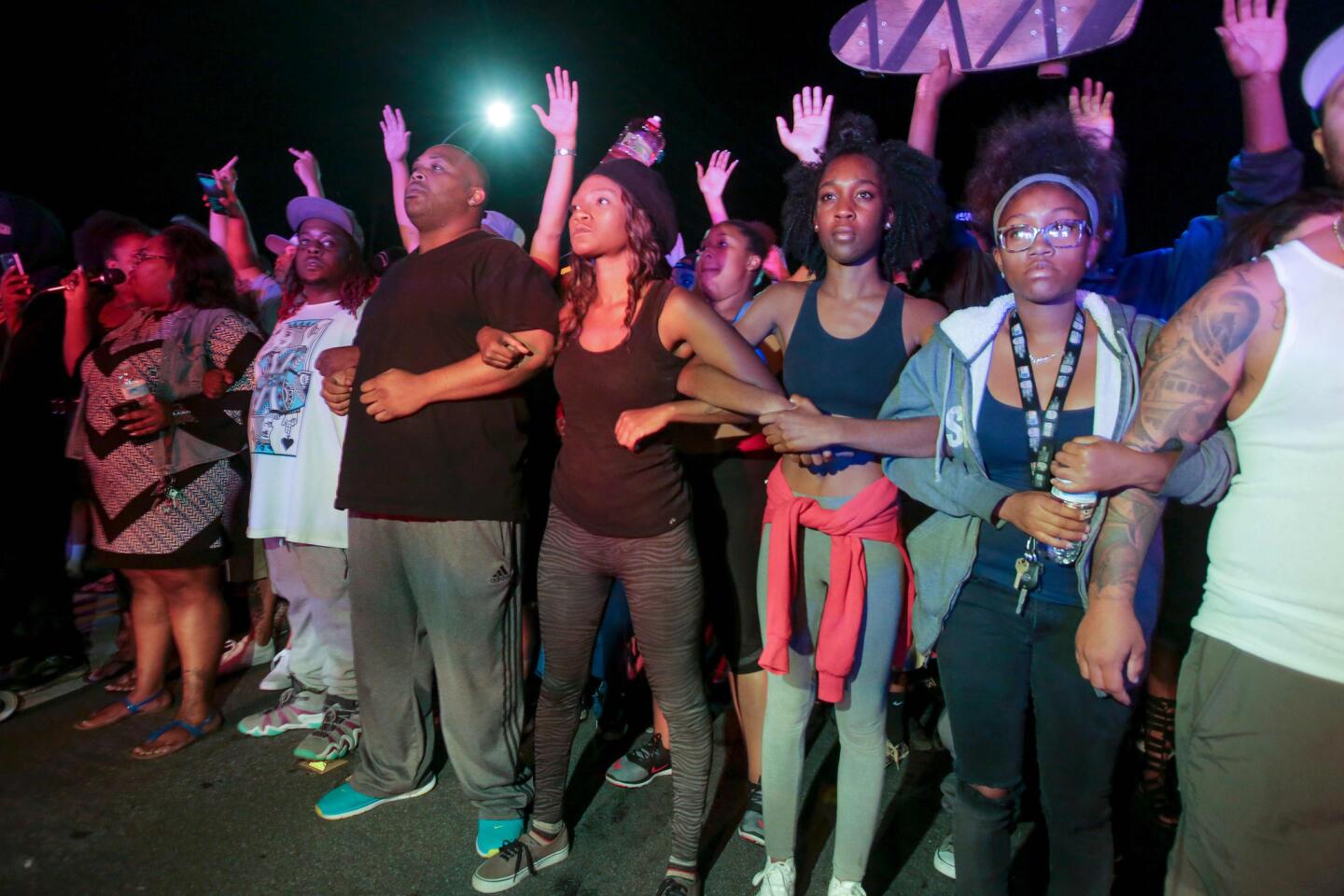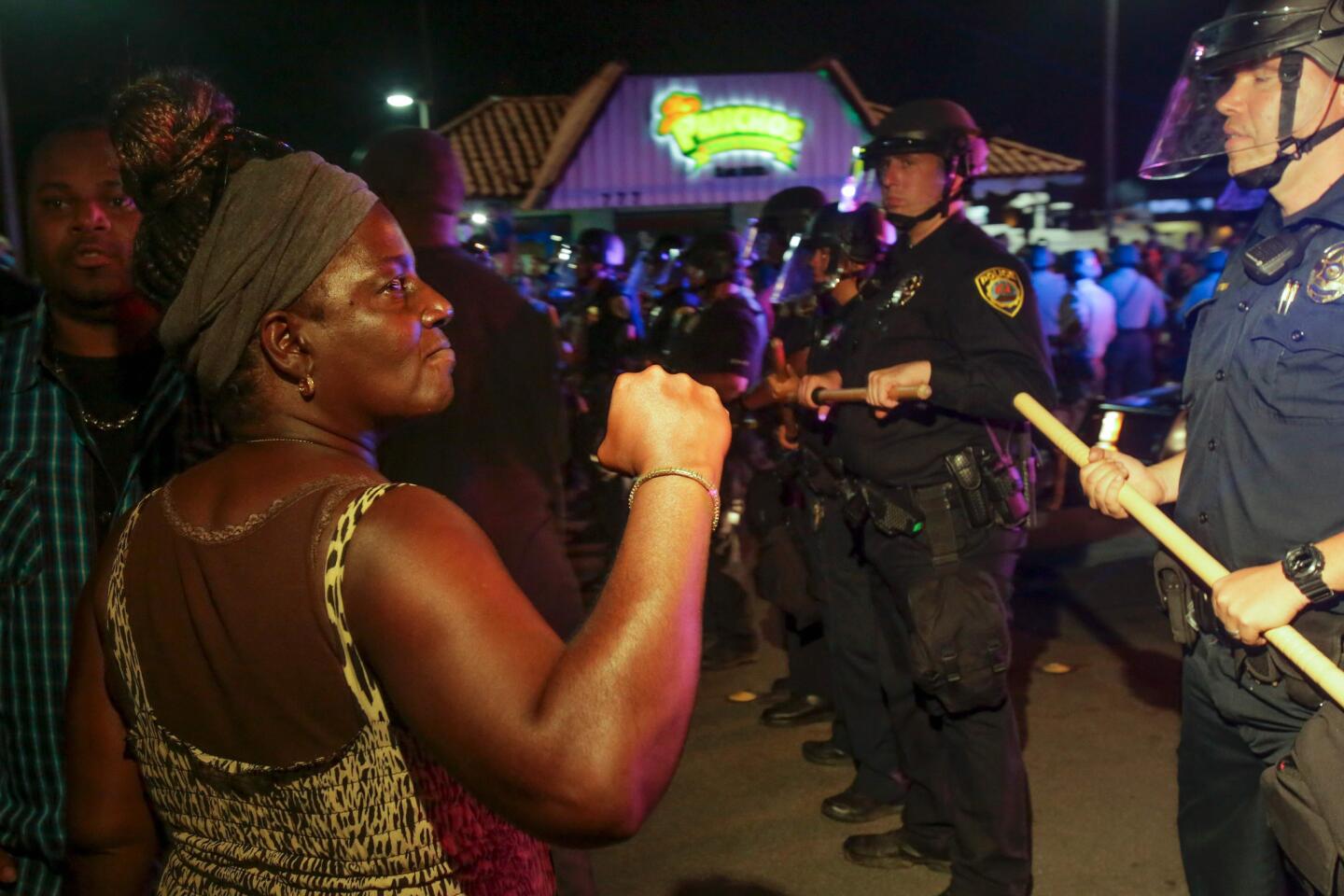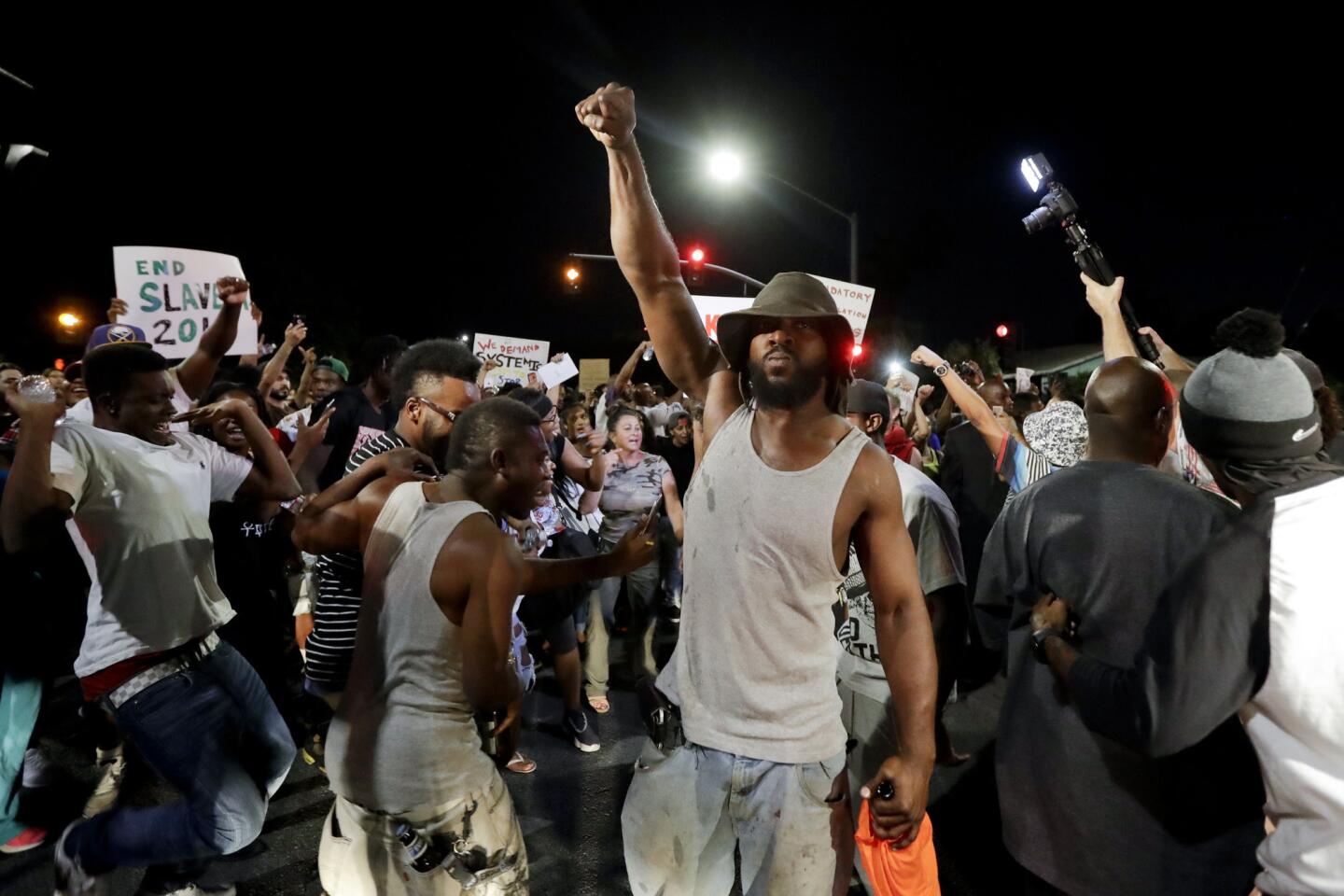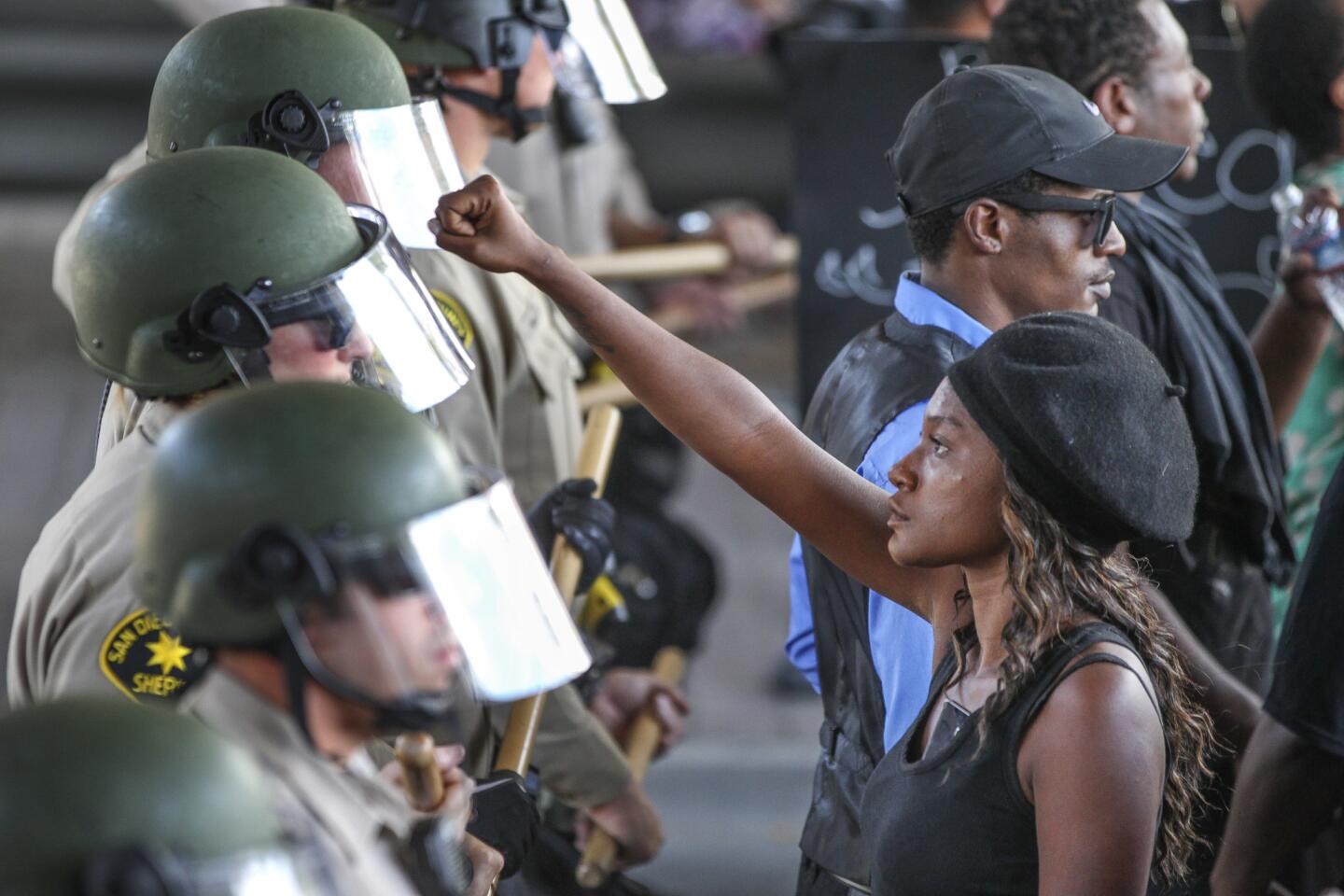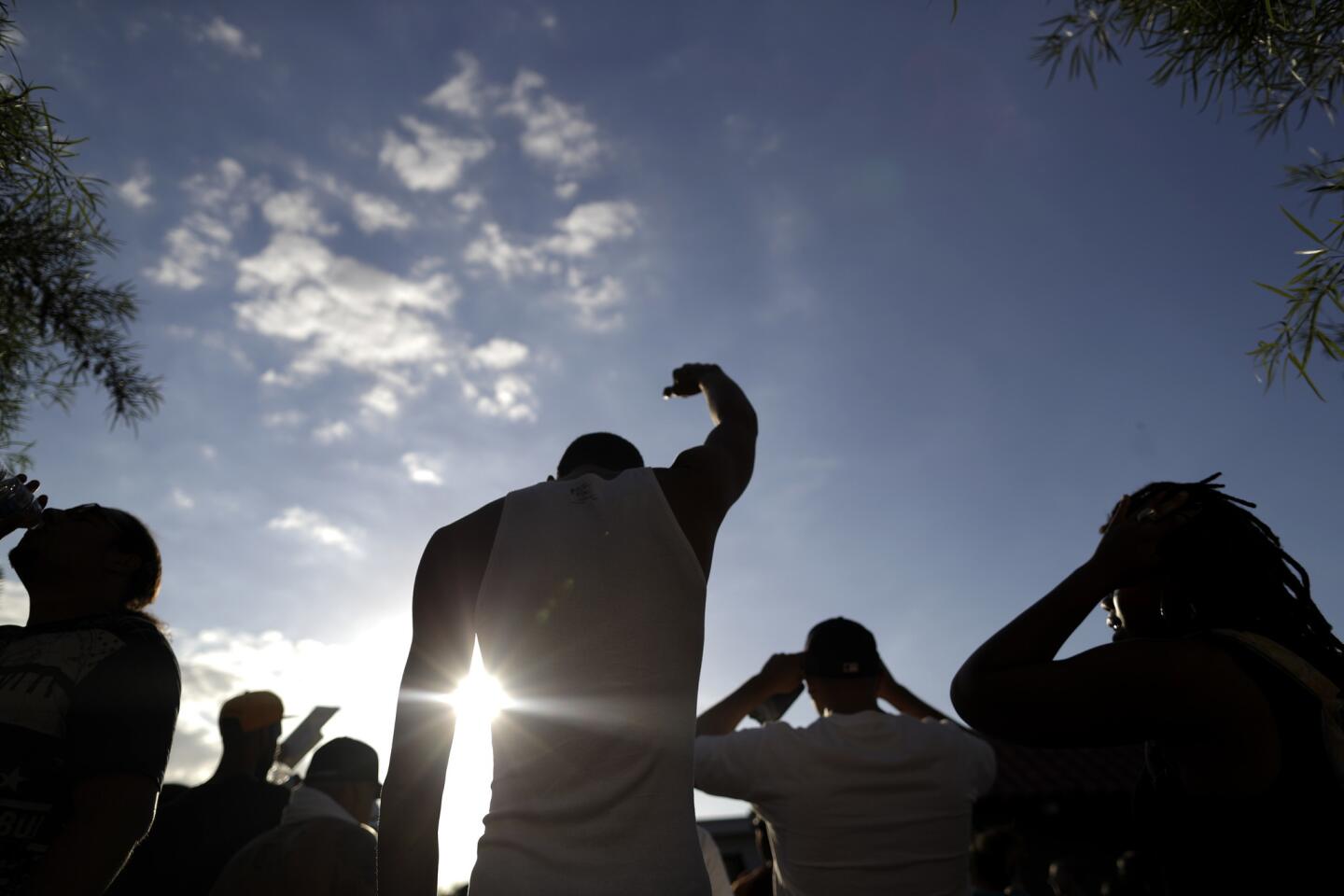Police embrace ‘de-escalation’ to reduce shootings, but some officers remain skeptical

Slow it down.
Police haven’t always been trained to think that way. They’re supposed to take immediate control of a situation, resolve the problem and move on to the next call. There are always more calls.
But the recent spate of fatal police shootings of unarmed black men — including Tuesday’s killing of Alfred Olango by El Cajon police — is fueling a movement by agencies across the country to expand the training officers get in de-escalation techniques. Through role-playing with real-life scenarios, they are taught better communication skills aimed at helping them defuse situations that might otherwise turn violent.
“It’s the direction law enforcement needs to go,” said former San Diego Police Chief Bill Lansdowne. “We need to spend more time on when to shoot as opposed to just how to shoot.”
Although de-escalation has been a part of recruit training for years, it’s generally been just a small part. A survey last year of almost 300 law enforcement agencies by the Police Executive Research Forum, a nonprofit “best practices” organization based in Washington, D.C., found that recruits on average receive 58 hours of training on firearms, 49 hours on defensive tactics and just eight hours on de-escalation.
In-service training for veteran officers also gives little attention to it, according to the survey.
The issue is drawing renewed interest after a summer marked by fatal police shootings and riots in Milwaukee, Wis., Tulsa, Okla., and Charlotte, N.C. Two weeks ago, police officials in Chicago, beset by use-of-force controversies, began sending all 12,500 of their sworn officers through mandatory, two-day de-escalation training. That follows similar efforts in Seattle, Las Vegas and Los Angeles.
De-escalation techniques can be especially useful while dealing with people who are mentally ill or emotionally disturbed, according to experts.
About 25% of fatal police shootings in the country involve people with mental health issues, according to data collected by the Washington Post — 172 of the 716 shootings so far this year. A 2013 study by the Treatment Advocacy Center and the National Sheriff’s Assn. said the figure is closer to 50%.
As the Police Executive Research Forum survey found, police in general get little training on how to interact with the mentally ill. That can be a problem, according to experts, because an ongoing shortage of mental-health treatment services leaves people to call 911 for help in a crisis. The first ones there are usually officers carrying guns.
“We really have to take a second look at the training we are doing in this country,” said Chuck Wexler, the research forum’s executive director. “It’s not kept up with today’s demands.”
His group issued a report in March called “Guiding Principles on Use of Force” that highlights 30 recommendations for improving policies, training, tactics and equipment. Several pertain to de-escalation, including one that says it should be “a core theme of an agency’s training.”
During a difficult situation, communications between officers and the person they are encountering should begin at a “low level,” according to the guidelines, with police talking calmly in a normal tone of voice and asking questions instead of shouting orders. When possible, they should use distance and cover to “slow the situation down” and provide time to communicate and develop options.
“Officers should not unnecessarily escalate a situation themselves,” the guidelines say.
Lansdowne, who along with hundreds of other police personnel from around the country participated in conferences that helped shape the guidelines, said he thinks they’re the right approach, especially when it comes to dealing with people who are mentally or emotionally disturbed.
“They often don’t respond well to commands and orders,” he said. “You’ve got to back off and calm it down.”
The push toward more de-escalation training has drawn backlash from police unions and rank-and-file officers, some of whom dismiss the emphasis on better communication strategies as “hug a thug.”
Harvey Hedden, executive director of the International Law Enforcement Educators and Trainers Assn., told the New York Times, “The concern we have is that hesitation might end up having an officer getting killed or assaulted.”
Lansdowne said he’s heard resistance from “the old cadre that doesn’t want to change.”
“But it’s time,” said the retired chief. “We get it. Law enforcement is resilient, innovative and very much wants to do the right thing.”
ALSO
Dash-cam video shows police trying to run over a mentally ill suspect before shooting him 14 times
Demonstrations continue in El Cajon after fatal police shooting of unarmed black man
Mother laments son’s death in El Cajon police shooting: ‘I wanted his future to be longer than that’
More to Read
Start your day right
Sign up for Essential California for news, features and recommendations from the L.A. Times and beyond in your inbox six days a week.
You may occasionally receive promotional content from the Los Angeles Times.
